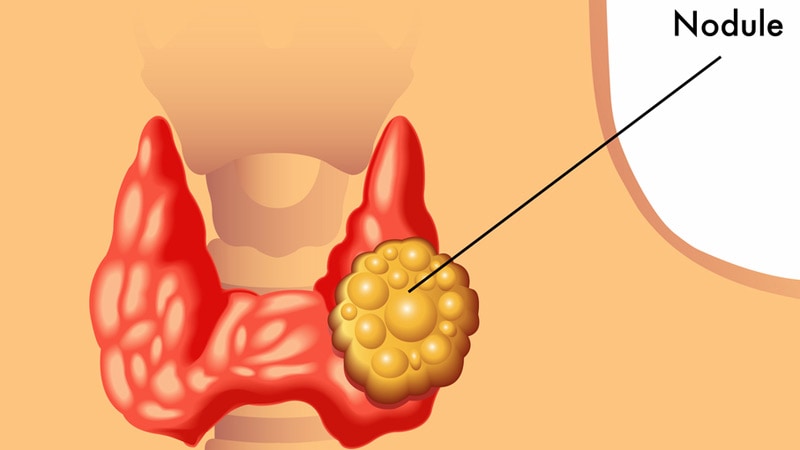False Negative Rates in Large Thyroid Nodules and Nonsurgical Options
Temel Kavramlar
Nonsurgical options like radiofrequency ablation may be suitable for more large thyroid nodule patients than previously thought.
Özet
The content discusses the false negative rates in large thyroid nodules and the potential for nonsurgical options for patients. It highlights the importance of considering patients who do not have surgery indications and suggests conservative follow-up strategies. The study presented at the American Thyroid Association meeting challenges the high false negative rates reported in previous studies and emphasizes the need for a better understanding of benign rates in large nodules.
False Negative Rates in Large Thyroid Nodules
- False negative rates in FNA biopsies of large thyroid nodules are lower when considering all nodules, not just those operated on.
- Concerns about high false negative rates in nodules over 4 cm classified as benign.
Study Findings and Recommendations
- Retrospective chart review of patients with nodules over 4 cm and Bethesda II cytology.
- False negative rate for large nodules was 4.3% when including all patients.
- Recommendations for conservative follow-up strategies for large benign nodules.
Clinical Implications and Cost Considerations
- Concerns about discontinuing follow-up on large benign nodules leading to late cancer diagnosis.
- Surgical procedures like thyroidectomy should be used cautiously when benefits outweigh risks.
Insights from Other Experts
- Paparodis suggests careful sonographic evaluation and FNA of suspicious nodules before surgical management.
Customize Summary
Rewrite with AI
Generate Citations
Translate Source
To Another Language
Generate MindMap
from source content
Visit Source
www.medscape.com
Nonsurgical Option for More Large Thyroid Nodule Patients?
İstatistikler
"While the false negative rate for thyroid nodules in general is approximately 3%, the rate for large nodules over 4 cm has been reported as high as 35%."
"Overall, the false negative rate including all patients was 4.3%."
Alıntılar
"Clinicians should consider following these patients more conservatively, either with a second FNA to confirm [the] nodule is benign, or with ultrasound follow-up for 5 years with intervention only if [there are] significant changes on imaging."
"Therefore, we suggest that careful sonographic evaluation of all thyroid nodules is warranted prior to deciding and planning the extent of surgical management for multinodular goiter."
Önemli Bilgiler Şuradan Elde Edildi
by Nancy A. Mel... : www.medscape.com 10-11-2023
https://www.medscape.com/viewarticle/997261
Daha Derin Sorular
How can the healthcare system better support patients with large thyroid nodules who opt for nonsurgical options?
The healthcare system can better support patients with large thyroid nodules who choose nonsurgical options by implementing a multidisciplinary approach. This approach should involve endocrinologists, radiologists, and surgeons working together to develop individualized treatment plans for each patient. Regular monitoring through ultrasound follow-ups and repeat FNA biopsies can help ensure the nodules remain benign. Additionally, educating patients about the risks and benefits of nonsurgical options, such as radiofrequency ablation, and involving them in shared decision-making processes can empower patients to make informed choices about their care.
What are the potential drawbacks of conservative follow-up strategies for large benign nodules?
While conservative follow-up strategies for large benign nodules can help avoid unnecessary surgeries and reduce healthcare costs, there are potential drawbacks to consider. One drawback is the risk of missing early-stage thyroid cancer in patients with large nodules that may have been misclassified as benign. Delayed diagnosis of thyroid cancer could lead to more advanced disease stages, requiring more aggressive treatments and impacting patient outcomes. Additionally, conservative follow-up strategies may cause anxiety for patients who are uncertain about the nature of their nodules, leading to increased psychological distress. Therefore, careful consideration and close monitoring are essential to balance the benefits and risks of conservative follow-up strategies for large benign nodules.
How can advancements in imaging technology improve the accuracy of diagnosing thyroid nodules?
Advancements in imaging technology, such as high-resolution ultrasound and elastography, can significantly improve the accuracy of diagnosing thyroid nodules. These technologies allow for better characterization of nodules based on their size, shape, margins, and internal composition, helping to differentiate between benign and malignant nodules. Additionally, molecular imaging techniques like positron emission tomography (PET) scans can provide valuable information about the metabolic activity of nodules, aiding in the detection of aggressive thyroid cancers. By incorporating these advanced imaging modalities into routine clinical practice, healthcare providers can enhance the precision of diagnosing thyroid nodules, leading to more personalized and effective treatment strategies for patients.
0
